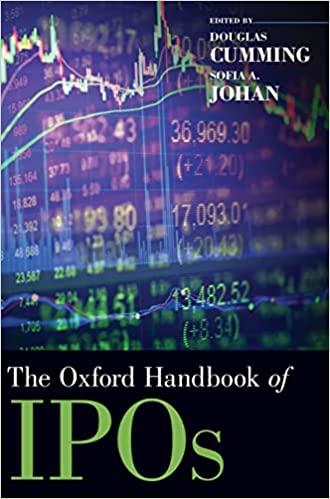

7. Market value ratios Ratios are mostly calculated using data drawn from the financial statements of a firm. However, another group of ratios, called market-based ratios, relate to a firm's observable market value, stock prices, and book values, integrating information from both the market and the firm's financial statements. Consider the case of Green Caterpillar Garden Supplies Inc.: Green Caterpillar Garden Supplies Inc. just reported earnings after tax (also called net income) of $8,500,000, and a current stock price of $34.00 per share. The company is forecasting an increase of 25% for its after-tax income next year, but it also expects it will have to issue 2,000,000 new shares of stock (raising its shares outstanding from 5,500,000 to 7,500,000). If Green Caterpillar's forecast urns out to be corre and its price-to-earnings ratio does not change, what does the company's management expect its stock price to be one year from now? (Note: Round intermediate calculations to four decimal places. Round the expected stock price to two decimal places.) O $31.17 per share o $34 per share o $23.38 per share o $38.96 per share One year later, Green Caterpillar's shares are trading at $48.36 per share, and the company reports the value of its total common equity as $46,755,000. Given this information, Green Caterpillar's market-to-book (M/B) ratio is (Note: Do not round intermediate calculations.) 18.62 x Can a company's shares exhib Live P/E ratio? 11.64 x O Yes 7.76 x O No 1.09 x Which of the following statements is true about market value ratios? o Companies with high research and development (R&D) expenses tend to have low P/E ratios. o Companies with high research and development (R&D) expenses tend to have high P/E ratios. 7. Market value ratios Ratios are mostly calculated using data drawn from the financial statements of a firm. However, another group of ratios, called market-based ratios, relate to a firm's observable market value, stock prices, and book values, integrating information from both the market and the firm's financial statements. Consider the case of Green Caterpillar Garden Supplies Inc.: Green Caterpillar Garden Supplies Inc. just reported earnings after tax (also called net income) of $8,500,000, and a current stock price of $34.00 per share. The company is forecasting an increase of 25% for its after-tax income next year, but it also expects it will have to issue 2,000,000 new shares of stock (raising its shares outstanding from 5,500,000 to 7,500,000). If Green Caterpillar's forecast turns out to be correct and its price-to-earnings (P/E) ratio does not change, what does the company's management expect its stock price to be one year from now? (Note: Round intermediate calculations to four decimal places. Round the expected stock price to two decimal places.) o $31.17 per share o $34 per share o $23.38 per share O $38.96 per share One year later, Green Caterpillar's shares are trading at $48.36 per share, and the company reports the value of its total common equity as $46,755,000. Given this information, Green Caterpillar's market-to-book (M/B) ratio is (Note: Do not round intermediate calculations.) Can a company's shares exhibit a negative P/E ratio? o Yes O No Which of the following statements is true about market value ratios? o Companies with high research and development (R&D) expenses tend to have low P/E ratios. o Companies with high research and development (R&D) expenses tend to have high P/E ratios








